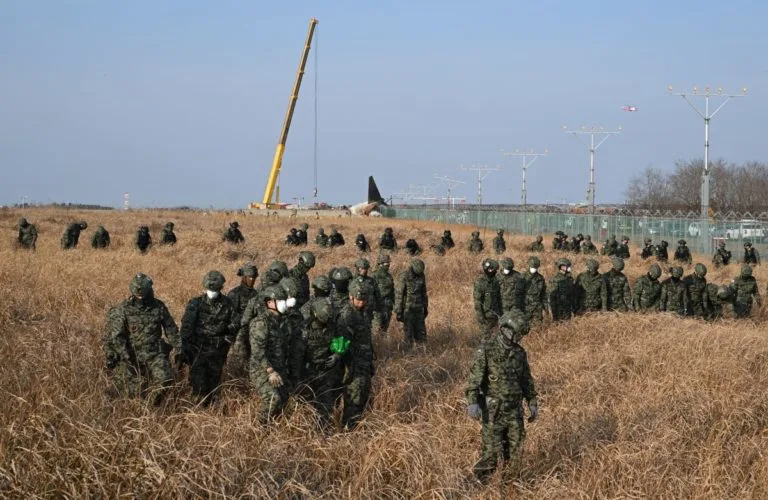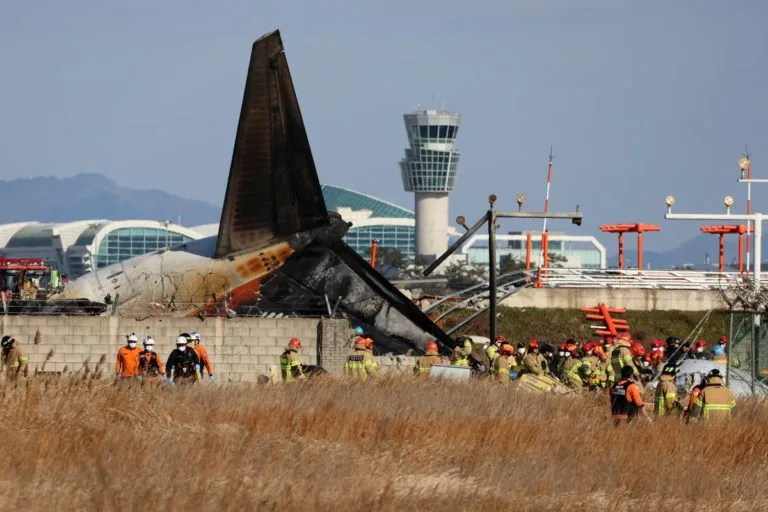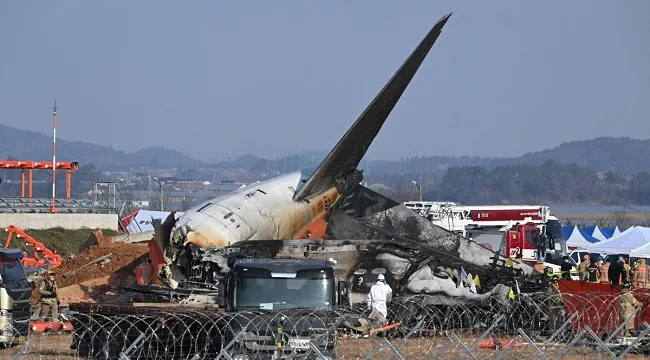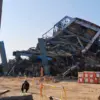A Jeju Air flight carrying 181 passengers from Thailand to South Korea tragically crashed upon arrival at Muan International Airport on Sunday, killing 179 people.
The Boeing 737-800 struck a barrier before bursting into flames, with only two flight attendants surviving, miraculously rescued from the wreckage.
Authorities believe a bird strike likely caused the disaster, marking the deadliest aviation accident in South Korean history. The crash left passengers ejected from the aircraft and the plane “almost completely destroyed,” according to fire officials. Video footage showed the plane skidding off the runway, trailing smoke before crashing into a wall and erupting in a massive fire.
The country’s fire agency confirmed that 65 victims have been identified, and DNA retrieval efforts are ongoing. Grieving relatives gathered at the airport, as authorities read out the names of the identified victims, triggering fresh waves of anguish.

The accident unfolded rapidly, with the control tower issuing a bird strike warning just minutes before the pilot declared a “mayday.” Despite the warning, the plane could not regain control and collided with the runway’s barrier. Local fire officials explained that the severity of the impact left little chance of survival for most passengers.
Rescue workers, working through the night under floodlights, used a crane to lift the burned fuselage off the runway. Nearby, charred remnants of luggage and seat fragments painted a stark image of the catastrophe.

Among the dead were 179 Koreans and two Thai nationals, with ages ranging from a three-year-old boy to a 78-year-old. The crash happened within minutes of the warning, and while the investigation is still underway, officials suspect the bird strike caused a critical engine failure. However, the runway length has been ruled out as a factor.
South Korea’s acting President Choi Sang-mok, who assumed office just days earlier, visited the crash site and vowed full government support for the victims’ families. A national mourning period has been declared, and memorial altars will be set up across the country.
Jeju Air, one of South Korea’s largest low-cost carriers, expressed deep sorrow and vowed to cooperate fully with authorities. Boeing, the aircraft manufacturer, also offered its support.
This devastating accident is the first fatal crash for Jeju Air, which was founded in 2005. South Korea is known for its strong aviation safety record, making this tragedy all the more painful. Bird strikes have caused fatal accidents worldwide, with the most notable example being the 2009 “Miracle on the Hudson,” where a US Airways flight safely landed after both engines failed due to bird strikes.
The investigation is ongoing, and officials have promised a thorough review of all factors that contributed to the disaster.
AFP


